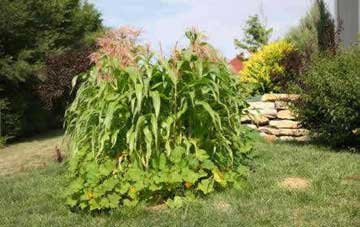The
village of Plymouth was built on the site of the Wampanoag village of
Patuxet. It had been wiped out by
smallpox and slave raids before their arrival.
This group of Europeans survived the winter of 1620-21 because they were
taken care of by Native Americans, despite their suspicions of the new people.
Most
of the Pilgrims were from urban areas.
The Native Americans had to teach them how to grow corn, beans and squash. When their Native mentors died from disease
or warfare, the Pilgrims took over their fields and storehouses. After 7 years the Puritans accumulated enough
wealth to create the Massachusetts Bay Colony and buy out the stock of the
Plymouth Company. Within the next 6
years the Pilgrims were able to pay off the entire debt of the company through
trade with the Natives and growing Native American crops.
North
American colonists originally used the Native technique of hilling crops. Since
it was abandoned, erosion has increased dramatically and thousands of tons of
the best soil washed away downstream. The
traditional practice of corn, squash and beans together reduces destruction of
plants by insects and other pests. Corn yields
are 50% more than the monoculture practiced today in the United States.
Many
food producing plants that appeared to be conveniently placed in the wild (to
Europeans) were there because the Natives either found them there and took care of them or had already planted them there. It was not divine providence.
Natives
perfected growth of crops from cuttings and root sprouts. They could produce 13 generations of tomatoes
with no degradation of the plant.
Native
Americans were first to use guano in fertilizer. Its use in Europe initiated modern farming
practice and fertilizer business there. Native
Americans were first to use fish for fertilizer. Now fish meal is used.

No comments:
Post a Comment